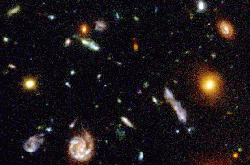Today we’re sharing insight from guest blogger Jerry Scott. We hope you enjoy Jerry’s wisdom and perspective.
 “Anyone can become angry – that is easy. But to be angry with the right person, to the right degree, at the right time, for the right purpose, and in the right way – this is not easy.” - Aristotle, The Nicomachean Ethics
“Anyone can become angry – that is easy. But to be angry with the right person, to the right degree, at the right time, for the right purpose, and in the right way – this is not easy.” - Aristotle, The Nicomachean Ethics
I am not particularly proud to share that I got angry at work the other day. Something happened that got under my skin and I felt that hot flash of smothered rage. Maybe deep down inside I felt threatened, diminished, disrespected, or thwarted in some way. It was one of those times that seemed like someone was sticking a foot out to trip me in the pursuit of my cause. It hurt. And I wanted to lash out. I wanted to shout, pound my desk, hit the wall, curse, use sarcasm, send a hostile email, or at least engage in some virulent form of passive resistance. I wanted justice, a pound of flesh, or at least vindication. Mainly I wanted to express how I felt and in some way to share the pain. But of course I didn’t.
In 1995 I read a remarkable and life-altering book by Daniel Goleman called Emotional Intelligence. Through that book I learned why emotional intelligence can matter more than IQ. I learned why we have such intense reactions to anger-inducing situations and why, when unfiltered and unmanaged, those reactions can cause us to behave in ways totally counter to our objectives and even our own self interest. Mastering emotional intelligence gives us the capacity and skill to manage our own emotions in order to make smarter decisions while under emotional distress. Not smarter in any esoteric sense, but tactically smarter in the sense of getting what we want and need from other people to advance our cause and the cause of our organization.
“To the degree that our emotions get in the way of or enhance our ability to think and plan, to pursue training for a distant goal, to solve problems and the like, they define the limits of our capacity to use our innate mental abilities, and so determine how we do in life. It is in this sense that emotional intelligence is a master aptitude, a capacity that profoundly affects all other abilities, either facilitating or interfering with them.” - Dr. Goleman
So I did nothing other than take the high road…until I got home. Then I spent some time with my emotional intelligence talisman. My finished basement is a room which could be mistaken for a man cave. More accurate to call it a metro man cave. Lots of my weight equipment, along with a treadmill and elliptical that see a lot more action from Mrs. Scott. There are also home theatre chairs and a 50 inch HD TV that’s never seen a sporting event…films, business, and news shows mainly. Except when Mrs. Scott is on the treadmill watching VH1, CMT, QVC…and those other three letter channels. Sporadic and half-hearted attempts to decorate have been pretty much defeated by my signed Star Trek movie posters and the gem of my collection…my emotional intelligence talisman.
Hanging on the wall, and the subject of my contemplation that day, is a large photograph. Actually a reproduction of a photograph taken by the Hubble Space Telescope in 1995 called the Hubble Deep Field. The Hubble was aimed at a black and empty slice of space similar to taking a photograph through a nickel size opening a football field away. It’s a curious thing to have hanging on the wall. It’s maybe 18 inches by 18 inches. It basically shows a collection of light points and swirls set against a black background of the void of space. Those swirls of light are galaxies 10 billion light years from Earth.
Now you know photographs aren’t ideas, they are physical things. Light, whether you consider it as particles or waves, is a physical thing with measurable properties. The light recorded in that photograph traveled 10 billion years until it hit the back of the Hubble’s camera. The time is one thing. The Earth is around 4 billion years old and all of recorded human history encompasses maybe 20,000 years. And the distance? The closest star to Earth is 4 light years away. It would take us 20,000 years to travel to that star at conventional rocket speed. 10 billion light years?
What’s The Risk?
Going negative in the workplace almost never accomplishes anything good. You can stand for results, high expectations, accountability, and performance without using anger or aggression. In many ways, going negative is an indulgence and has almost no place in a modern leader’s tool kit.
Except maybe righteous anger. Anger in defense of my people almost always feels right.
It seems crazy but 10 minutes looking at a picture of galaxies 10 billion light years away and 10 billion years old kind of puts my troubles into a new light. Call it the majesty of the divine. Call it a gut check on perspective. But I always come back upstairs with a resolve that maybe it wasn’t such a big deal after all. Perhaps we all need some kind of talisman to bring us back to our senses. After all, scientists estimate that the Earth will exist for at least another 50 million centuries.
This content was written and shared by guest blogger, Jerry Scott. Connect with Jerry on LinkedIn and Twitter.



